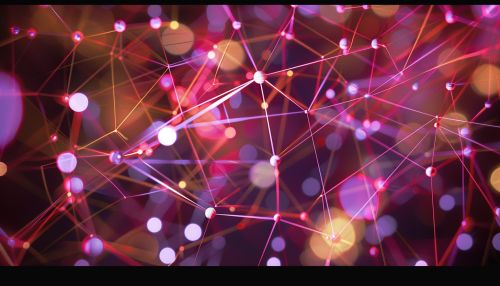Probabilistic Graphical Model
Introduction
A **Probabilistic Graphical Model (PGM)** is a representation that combines probability theory and graph theory to model complex systems with uncertainty. PGMs provide a structured framework to represent and reason about the probabilistic relationships among a set of variables. These models are widely used in various fields such as machine learning, artificial intelligence, bioinformatics, and computer vision.
Types of Probabilistic Graphical Models
Probabilistic Graphical Models can be broadly classified into two categories: **Directed Graphical Models** and **Undirected Graphical Models**.
Directed Graphical Models
Directed Graphical Models, also known as **Bayesian Networks**, represent the conditional dependencies between variables using directed edges. Each node in the graph corresponds to a random variable, and the directed edges indicate the direction of influence. The structure of a Bayesian Network encodes the joint probability distribution of the variables.


Bayesian Networks are particularly useful for modeling causal relationships and performing inference. The joint probability distribution in a Bayesian Network can be factorized as a product of conditional probabilities.
Undirected Graphical Models
Undirected Graphical Models, also known as **Markov Random Fields (MRFs)**, represent the dependencies between variables using undirected edges. In an MRF, the absence of an edge between two nodes implies conditional independence between the corresponding variables, given the rest of the variables.
MRFs are often used in applications where the direction of influence is not clear or not important. The joint probability distribution in an MRF can be factorized using potential functions defined over cliques of the graph.
Key Concepts and Components
Nodes and Edges
In a PGM, **nodes** represent random variables, and **edges** represent probabilistic dependencies between these variables. The nature of the edges (directed or undirected) determines the type of graphical model.
Conditional Independence
Conditional independence is a fundamental concept in PGMs. Two variables are conditionally independent given a set of other variables if the knowledge of one variable does not affect the probability distribution of the other, given the set of conditioning variables.
Factorization
The joint probability distribution in a PGM can be factorized into a product of local probability distributions. In Bayesian Networks, this factorization is based on conditional probabilities, while in MRFs, it is based on potential functions.
Inference
Inference in PGMs involves computing the probability distribution of a subset of variables given the observed values of other variables. Common inference techniques include exact inference methods like variable elimination and approximate inference methods like Markov Chain Monte Carlo (MCMC) and Variational Inference.
Learning in Probabilistic Graphical Models
Learning in PGMs involves estimating the parameters and structure of the model from data. There are two main types of learning: **parameter learning** and **structure learning**.
Parameter Learning
Parameter learning involves estimating the numerical values of the parameters that define the local probability distributions in the PGM. This can be done using methods like Maximum Likelihood Estimation (MLE) and Bayesian Estimation.
Structure Learning
Structure learning involves determining the graph structure that best represents the dependencies among the variables. This can be done using score-based methods, constraint-based methods, or hybrid methods.
Applications of Probabilistic Graphical Models
PGMs have a wide range of applications across various domains:
Natural Language Processing
In natural language processing, PGMs are used for tasks such as part-of-speech tagging, named entity recognition, and machine translation. Models like Hidden Markov Models (HMMs) and Conditional Random Fields (CRFs) are commonly used.
Bioinformatics
In bioinformatics, PGMs are used to model biological sequences, gene expression data, and protein structures. Bayesian Networks are used for gene regulatory network inference, while MRFs are used for protein structure prediction.
Computer Vision
In computer vision, PGMs are used for image segmentation, object recognition, and scene understanding. Models like Markov Random Fields and Conditional Random Fields are used to capture spatial dependencies in images.
